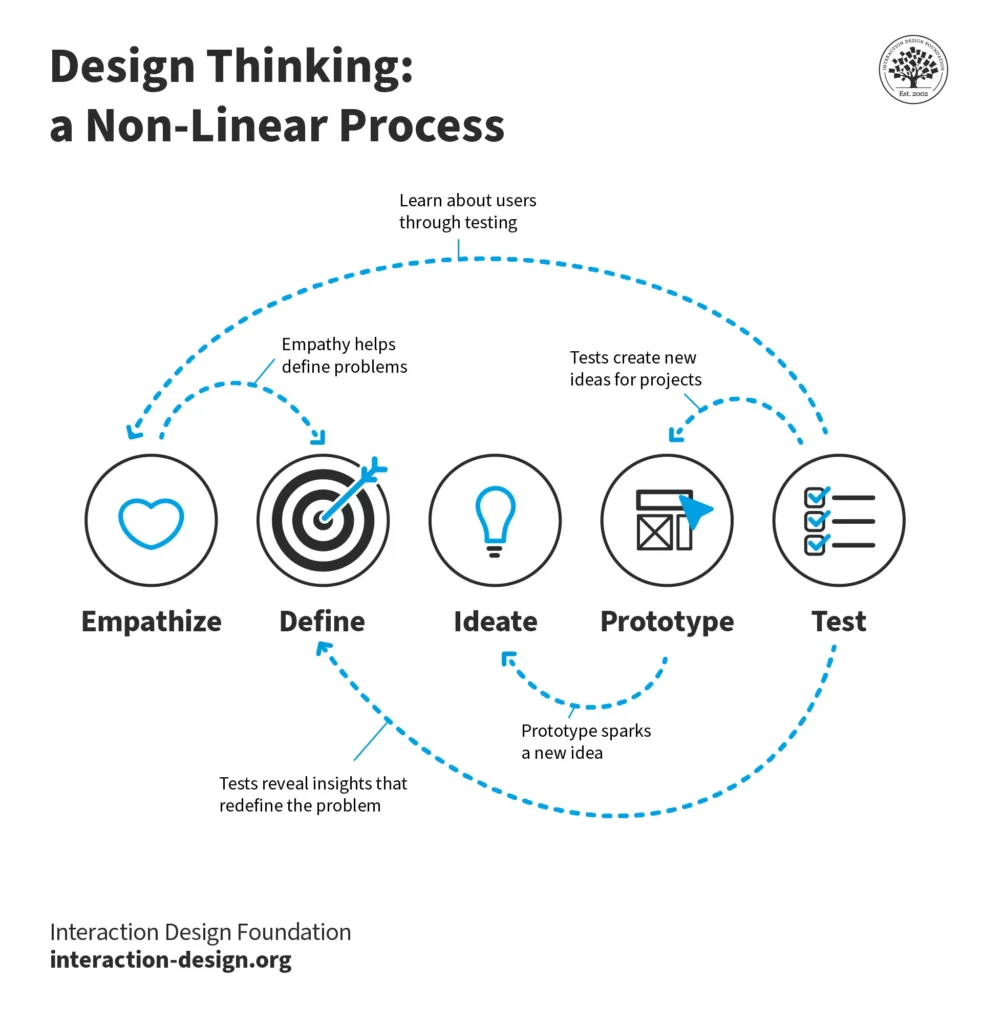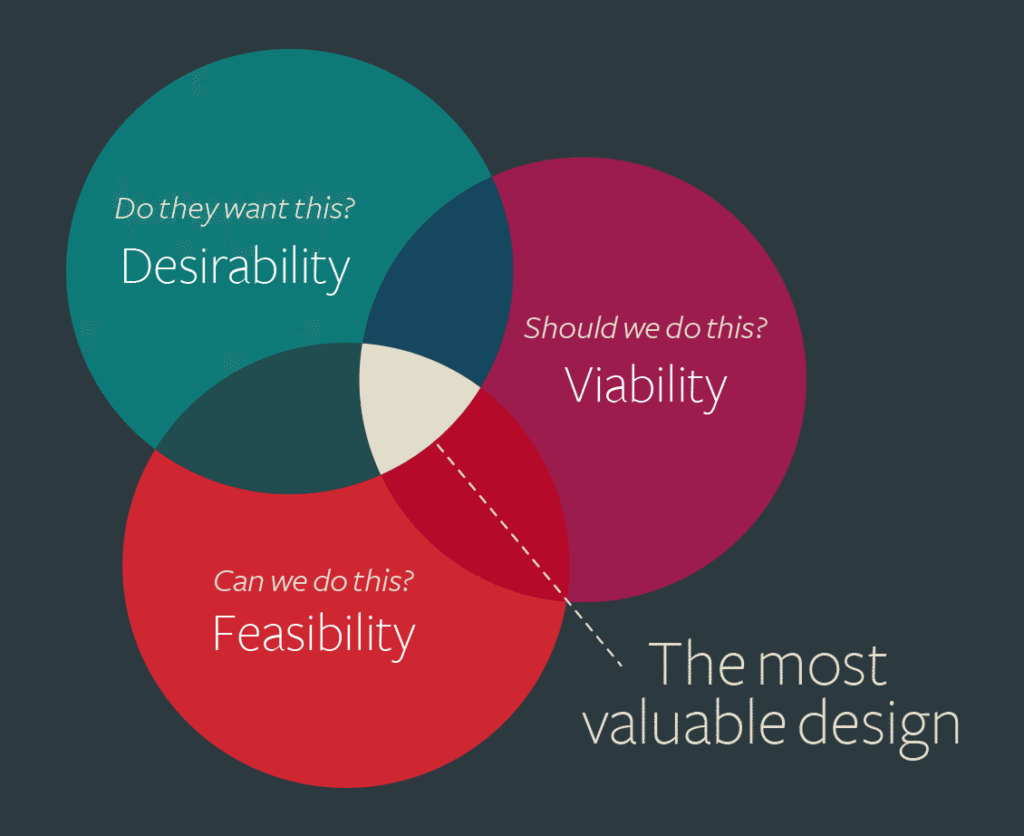What Do Product Designers and UX Designers Do?

Both product designers and UX designers are in high demand, and both share responsibility for a successful journey when customers navigate a digital product. Is there a difference between the roles?
If you’re reading this blog post, chances are you’re in one of the following positions:
- You’re considering a career change, and wondering why some schools provide degrees or certificates in product design, while others offer user experience (UX) design
- You’re new to the design industry, and trying to make sense of job listings seeking product designers and UX designers
The difference between product design and UX design is a good question to be asking. When examining a feature found within a digital product, UX designers focus primarily on whether the user is having a satisfying and intuitive experience, while product designers emphasize the business value of the feature. But in truth, there are far more similarities than differences between the roles.
The Similarities
Both Product Designers and UX Designers Solve Complex Problems
When users experience problems with a digital product, both product designers and UX designers need to employ creative approaches to identify the cause and generate innovative solutions. One common problem-solving strategy used by designers is a five-step, non-linear process called Design Thinking.
- Empathize: Get to know your users to understand their goals and pain points.
- Define: Name, as specifically as possible, the problem you’re trying to solve.
- Ideate: Brainstorm a variety of potential solutions.
- Prototype: Create a testable version of one solution.
- Test: Observe users interacting with your prototype.

Source: Interaction Design Foundation
These steps will be repeated frequently as new insights about user behavior are revealed.
Both Product Designers and UX Designers Work to Understand Their Users
Product designers and UX designers practice what’s known as human-centered design. When designing or updating a digital product, it’s important to understand the perspective, environment, and goals of the humans who will actually use the product. This involves a lot of research work by the designer. It’s not enough to make assumptions about how users will react when faced with a challenge; designers interview users to understand their point of view, and observe them using the product in everyday situations to see how they really behave and where frustrations occur.
Both types of designers have a special responsibility to make sure their products are accessible. Accessible design means making sure you’ve considered the needs of users with disabilities. Your product isn’t truly usable until everyone can use it.
Both Product Designers and UX Designers Consider Business Needs
While researching users and advocating for their needs is important, succeeding as a product designer or UX designer isn’t as simple as designing new features just because users request them. It’s equally critical to consider business needs.

Image source: Crowd Favorite
If a proposed change to a product satisfies users but causes the business to become unprofitable, the change should be rejected as lacking viability. Both product designers and UX designers need to work closely with product stakeholders and make sure all design solutions align with the business strategy.
Both Product Designers and UX Designers Work Closely with Developers
In addition to desirability (do users need this?) and viability (does this help the business?), product designers and UX designers communicate frequently with developers to ensure the feasibility of each design solution. Can your product’s development team implement this change? How long will it take?
A common question asked by prospective design students is should designers be able to write code? While learning code certainly doesn’t hurt, many designers don’t know enough code to build their own designs. It does help to learn about general coding principles and ask questions about the challenges developers face, so you’re capable of holding a meaningful conversation about the best way to implement a proposed design.
The Differences
So far we’ve covered the similarities between product design and UX design, but what about the differences?
If you research this question, you’ll find a few common answers.
A Difference in Focus
Product designers and UX designers need to remain constantly aware of both the perspective of the user and the needs of the business. However, as the job title suggests, UX designers spend more time with users, understanding their pain points and advocating for their needs.
Product designers, on the other hand, maintain more frequent contact with product owners and might need to have a more sophisticated understanding of business and market strategy than a UX designer.
A Difference in Fidelity
Some articles suggest that UX designers typically concentrate their time on Minimum Viable Products, or MVPs, to be used in the Prototype and Test stages of the Design Thinking process. MVPs are low-fidelity designs that are just complete enough to place in front of users and generate meaningful feedback during testing. Depending on the circumstances, this low-fidelity design might be pen and paper, a greyscale wireframe, or a more polished design containing an incomplete set of features.
On the other hand, product designers might be asked to spend more time at later stages, once testing is complete, designing the finished product to be placed in front of users. In this case, product designers would be expected to have a deep knowledge of user interface (UI) design, creating the navigation systems users rely upon to access and operate your product.
A Difference in Depth
A few sources claim that the difference between UX design and product design is one of breadth versus depth. According to this definition, UX designers switch projects more frequently and concentrate their efforts on the pre-launch stages of new products. Product designers, meanwhile, form a deeper relationship with a single product, and provide continuous support throughout the product life cycle.
This distinction is debatable, however. The work UX designers perform to observe users in real-life contexts, to identify usability problems and come up with innovative and valuable solutions, is no less meaningful once a product launches.
What’s next for prospective designers
Because there are indeed more similarities than differences between product design and UX design, what should the users profiled in the two bulleted positions at the top of the article do next?
If you’re a prospective student, look to see what kind of work graduates from each program are doing professionally. LinkedIn is a great tool for connecting with junior designers and asking what led them to design school and what advice they have for succeeding as a student and as an emerging job seeker.
If you’re researching design roles, your best bet is to look beyond the job title and read the description and required skills carefully. Some companies use the term product designer and UX designer interchangeably, and listings with identical titles (”Junior UX Designer,” for example) at two different companies might differ in daily duties or areas of focus.
Feeling Inspired?
If you’re thinking about a career in product design, why not take the leap and apply now to Flatiron School’s Product Design Bootcamp, where you’ll learn the design skills you need to land your first job in tech.
Graduates from Flatiron School develop in-demand skill sets that set them up for success in the industry, no matter the path they decide to take.
Not quite ready to apply? Try out our free Product Design Prep Work and try out the material we teach in the course.
Disclaimer: The information in this blog is current as of January 17, 2024. Current policies, offerings, procedures, and programs may differ.



